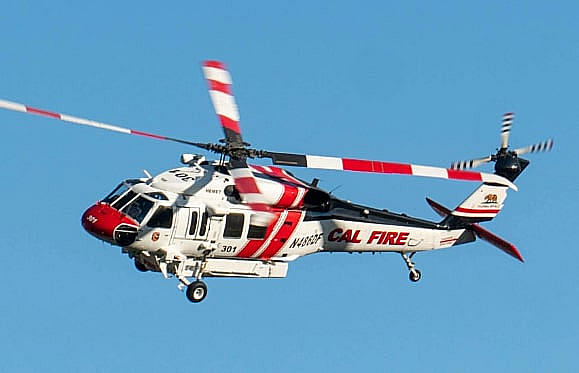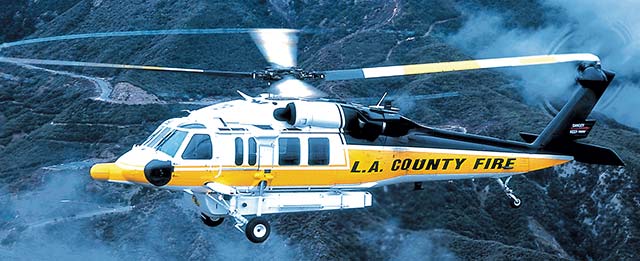How the Sikorsky S 70 Stands Apart in the Helicopter Sector
How the Sikorsky S 70 Stands Apart in the Helicopter Sector
Blog Article
High-Performance Multi-Role Rotorcraft Featuring Advanced Cockpit Technologies and Integrated Sensing Unit Equipments
The world of rotorcraft technology has seen noteworthy innovations in current times, especially in the world of high-performance multi-role rotorcraft furnished with cutting-edge cabin modern technologies and perfectly integrated sensor systems. These advancements have not only augmented the functional capabilities of rotorcraft however have actually also dramatically affected contemporary aviation procedures on different fronts. From enhanced mission convenience to enhanced functional performance, the merging of advanced cabin innovations and integrated sensing unit systems has introduced a brand-new era of opportunities for rotorcraft applications. In the following discussion, we will explore the evolution of rotorcraft technology, dig into the realm of advanced cabin innovations, and analyze the ramifications of integrated sensor systems on the functional flexibility and effectiveness of contemporary rotorcraft.
Development of Rotorcraft Modern Technology
The development of rotorcraft innovation has actually been noted by considerable advancements in the rules of aerodynamics, materials, and propulsion systems, forming the capabilities and efficiency of modern rotorcraft. Additionally, innovations in propulsion systems, consisting of a lot more effective engines and cutting-edge propulsion technologies, have allowed rotorcraft to attain higher altitudes, faster speeds, and better hauls.
These improvements have not just changed the capacities of rotorcraft yet have additionally broadened their applications across numerous industries, including military, business, and emergency solutions. The constant evolution of rotorcraft innovation continues to drive technology in the area, pressing the boundaries of what is feasible and forming the future of upright trip.
Advanced Cockpit Innovations
Building upon the foundational improvements in aerodynamics, products, and propulsion systems, the world of rotorcraft modern technology currently shifts emphasis in the direction of pioneering Advanced Cockpit Innovations. The assimilation of sophisticated technologies within the cabin setting plays a crucial role in enhancing the operational abilities, security, and performance of modern rotorcraft. sikorsky s 70. Advanced Cabin Innovations incorporate a large array of features made to offer pilots with boosted situational understanding, streamlined data monitoring, and intuitive control user interfaces
One of the vital advancements in cabin design is the execution of glass cabins, which change traditional analog gauges with high-resolution display screens. These electronic systems offer customizable designs, real-time information integration, and enhanced readability, allowing pilots to accessibility crucial details at a glimpse. Advanced avionics systems, such as fly-by-wire controls and augmented truth display screens, are revolutionizing exactly how pilots interact with the aircraft, enabling for accurate control and enhanced decision-making capabilities.


Including sophisticated cockpit developments not only enhances pilot efficiency yet likewise contributes to general objective effectiveness and safety and security in intricate functional settings. By leveraging modern technologies within the cabin, rotorcraft manufacturers are establishing new standards for functional quality and mission success.
Integrated Sensing Unit Systems
With the evolution of rotorcraft modern technology, the assimilation of sophisticated Integrated Sensor Equipment has actually ended up being critical in enhancing operational efficiency and security. These Integrated Sensing unit Systems encompass a vast variety of technologies that give essential data for numerous features such as navigation, monitoring, targeting, and ecological monitoring. By effortlessly integrating sensors like radars, electronic cameras, lidar, and infrared systems into rotorcraft, drivers can profit from improved situational understanding, boosted mission capabilities, and minimized pilot work.
One key advantage of Integrated Sensing unit Equipments is their capability to collect real-time data and give actionable insights to pilots and goal operators. As an example, progressed radar systems can discover and track targets over cross countries, enabling very early threat detection and reliable reaction preparation. In addition, integrating infrared and electro-optical cameras enables rotorcraft to conduct reconnaissance and surveillance missions with precision and accuracy.
Basically, the integration of advanced sensor technologies into rotorcraft not only enhances functional effectiveness however likewise contributes considerably to total objective success and crew safety. As rotorcraft continue to progress, the function of Integrated Sensing unit Solution will most certainly stay at the center of advancement in the aerospace market.
Operational Flexibility and Efficiency
Enhancing operational flexibility and effectiveness in rotorcraft is an all-natural development from the integration of innovative Integrated Sensing unit Equipments. By leveraging the data and insights offered by these cutting-edge sensing unit systems, rotorcraft can enhance their efficiency throughout numerous objectives and settings.
Operational versatility incorporates the capacity of rotorcraft to adjust to various functions and situations successfully. With innovative cockpit innovations and integrated sensor systems, rotorcraft can seamlessly shift between tasks such as search and rescue, medical evacuation, security, and much more. This convenience enhances the rotorcraft's capacity to satisfy diverse functional needs without calling for extensive reconfiguration.
Performance in rotorcraft procedures is essential for taking full advantage of objective effectiveness and source application. Integrated sensor systems play a pivotal role in boosting functional effectiveness by giving Website real-time information on weather condition conditions, terrain mapping, target monitoring, and a lot more. This data allows pilots to make educated choices quickly, enhance flight paths, conserve gas, and enhance overall objective efficiency.
Impact on Modern Aviation Workflow

Moreover, the combination of innovative sensors facilitates boosted objective planning and implementation, enabling rotorcraft to execute a variety of jobs with enhanced precision. From search and rescue procedures to airborne firefighting and police goals, the capacities of modern-day rotorcraft geared up with advanced cabin technologies and integrated sensing unit systems are unrivaled.
Moreover, the effect of these developments expands past operational performance to cost-effectiveness and sustainability. By maximizing flight courses, gas consumption, and maintenance routines, high-performance rotorcraft equipped with advanced cockpit innovations and sensors add website link to decreasing functional expenses and environmental influence, making them essential assets in modern aviation procedures.
Conclusion
To conclude, the high-performance multi-role rotorcraft with innovative cabin innovations and incorporated sensor systems stands for a significant evolution in aeronautics technology. These technologies enhance functional versatility and efficiency, ultimately influencing modern aviation procedures in a favorable way. The integration of these sophisticated modern technologies permits enhanced capacities and efficiency in different objective situations, showcasing the continued advancement of rotorcraft modern technology in the aviation sector.
The realm of rotorcraft technology has actually seen notable advancements in current times, especially in the realm of high-performance multi-role rotorcraft outfitted with innovative cabin innovations and perfectly incorporated sensor systems. From enhanced objective versatility to enhanced operational effectiveness, the convergence of sophisticated cockpit modern technologies and integrated sensing unit systems has ushered in a brand-new age of possibilities for rotorcraft applications. In the complying with discussion, we will certainly check out the advancement of rotorcraft innovation, delve right into the realm of innovative cockpit developments, and examine the effects of integrated sensor systems on the operational adaptability and efficiency of modern rotorcraft.
"/>
Report this page